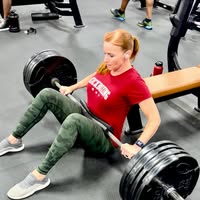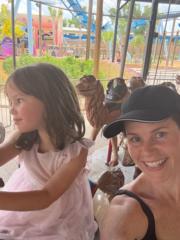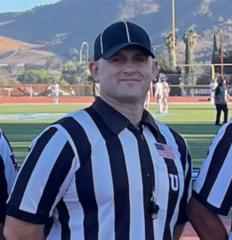Sep 17 • Article Series
The Hidden Switch: Why Long COVID Lingers and How to Restart the System 5
The final domino in long COVID recovery is integration. By now it is clear that no single pill, peptide, or supplement can resolve the condition. The problem is systemic a stalled cell danger response that traps immune, mitochondrial, vascular, and autonomic systems in alarm mode. The solution is not to throw everything at once but to restore order through a phased, feedback-driven protocol. Sequencing matters more than stacking. Just as you would not rebuild a storm-damaged city by opening shops before fixing power lines, recovery requires careful order: stabilize first, repair second, retrain third.
Phase one is the redox reset and immune modulation stage. The goal here is to calm the storm and stabilize energy so the system is ready to heal. This is where Kenetik Pro becomes uniquely powerful. As a ketone monoester, it rapidly raises circulating beta-hydroxybutyrate, giving mitochondria an immediate alternative fuel. Ketones bypass damaged Complex I and glycolysis bottlenecks, providing steady ATP even when glucose metabolism is impaired. This takes pressure off fragile mitochondria, lowers lactate buildup, and gives patients the first taste of metabolic stability. Beyond energy, ketones act as signaling molecules suppressing the NLRP3 inflammasome, reducing oxidative stress, and stimulating mitochondrial biogenesis through PGC-1α. In practice, Kenetik Pro is like plugging in a backup generator during a blackout: the lights come back on, even while the grid is still being repaired. This metabolic cushion makes all other Phase 1 interventions more effective.
Alongside Kenetik Pro, mitochondrial-targeted peptides like SS-31 stabilize cardiolipin and reduce electron leak. Thymic peptides such as TA-1 help restore T cell balance. KPV and resolvins modulate mast cells and push inflammation toward resolution. Antioxidant stacks with NAC, glycine, and glutathione rebuild redox buffering. Methylene blue also fits into this phase, but its timing is particularly relevant. While it can act as an electron bridge across damaged complexes, methylene blue also inhibits nitric oxide synthase. That means it can block endothelial nitric oxide production. In situations where NO is excessively high such as during oxidative stress surges, vasoplegia, or inflammatory storms this can be useful to prevent further vascular damage. But nitric oxide is not purely harmful; the immune system requires inducible nitric oxide (iNOS) to kill pathogens and regulate immune responses. If methylene blue is overused or given at the wrong point, it can blunt immune clearance and stall recovery. The art is in using it as a short-term stabilizer, not a continuous intervention. Think of it as temporarily shutting off a fire hydrant when the streets are already flooded, but making sure not to cut water supply to the firefighters who still need it.
Photobiomodulation complements this phase by delivering photons to cytochrome c oxidase, nudging mitochondria out of alarm mode without interfering with nitric oxide in the same way. Circadian inputs morning sunlight, consistent sleep, and feeding fasting cycles further reinforce the “safety” message. When Phase 1 is done correctly, patients often report meaningful improvements in fatigue, brain fog, and stability not because the mitochondria or endothelium are fully repaired, but because the backup generator has stabilized the grid while the repair crews get to work.
Phase two is mitochondrial and endothelial repair. Once the storm is quieter and ATP levels are more stable, the focus shifts to deeper rebuilding. MOTS-c and urolithin A promote mitochondrial turnover and renewal. NAD+ strategies, carefully balanced with antioxidants, restore metabolic flexibility. Plasmalogens strengthen membranes and improve signaling. BPC-157 supports endothelial healing and angiogenesis. Arginine and citrulline restore nitric oxide production, while sulforaphane activates NRF2 to reduce oxidative stress. Kenetik Pro continues here, but now as a supportive fuel rather than a rescue tool, buying time while intrinsic energy pathways are rebuilt. Methylene blue, by this point, should only be used episodically and under clear reasoning when inflammatory NO is pathologically elevated. The long-term trajectory requires restoring normal nitric oxide dynamics, not suppressing them.
Phase three is autonomic retraining and graded reconditioning. Once mitochondria and endothelium can support more stable energy and circulation, the nervous system must relearn how to regulate itself. HRV training, paced breathing, and vagus nerve stimulation help restore parasympathetic tone. Recumbent or semi-recumbent exercise retrains baroreceptors without triggering post-exertional crashes. Fascia hydration and release techniques improve fluid dynamics and mechanical signaling. Over time, carefully dosed strength training and intervals can be layered in, guided by HRV, lactate thresholds, and oxygen utilization metrics. This stage locks in durable resilience and gives patients back their adaptive capacity.
Different patients may need to emphasize certain phases depending on whether they are fatigue-dominant, neuro-dominant, or cardio-dominant. Fatigue-dominant cases often need an extended Kenetik Pro window before mitochondrial repair takes hold. Neuro-dominant cases may benefit from Semax, Selank, or cerebrolysin alongside vagus training. Cardio-dominant cases with microclots may require extended endothelial support with plasmalogens, pro-resolving mediators, and arginine before moving to higher-level exertion. Methylene blue should always be considered context-dependent potentially helpful in neuro-dominant cases with NO-driven oxidative stress, but risky if used continuously in those who need iNOS for immune recalibration.
Biomarkers guide the process. Prodrome scans reveal plasmalogen status and redox balance. Cystatin C and creatinine track kidney and vascular resilience. VEGF and endothelial markers show vascular recovery. HRV trends and lactate thresholds reflect mitochondrial and autonomic function. By combining symptoms with labs, clinicians can decide when methylene blue makes sense and when it could hinder immune recalibration.
The longevity implications are profound. The same strategies that restore long COVID physiology mitochondrial resilience, endothelial integrity, immune balance also protect against neurodegeneration, cardiovascular decline, and inflammaging. What begins as a repair protocol becomes a model for building antifragility.
The analogy is a storm-damaged city. Phase one is plugging in backup generators like Kenetik Pro to restore power while controlling excess surges with tools like methylene blue. But just as you would not cut off water to firefighters forever, methylene blue must be used with timing in mind helpful in a flood, harmful if it deprives the city long term. Phase two is rebuilding roads, bridges, and the power grid. Phase three is retraining the citizens to live and move with stability again. Skipping a phase leaves the city fragile. Following the sequence allows the city to not only recover but thrive.
Long COVID is daunting, but with the right sequence, the dominoes can be set upright again. The lights can come back on, the highways can be repaired, and life can return with more resilience than before. Kenetik Pro, used wisely at the start, gives patients the safety margin they need. Methylene blue, used with precision and timing, can help stabilize the storm without accidentally shutting down the very systems required for long-term repair.
Phase 1: Redox Reset + Immune Modulation (Weeks 0–4)
Goal: Stabilize energy, reduce alarm signaling, prepare for repair.
Kenetik Pro (ketone monoester) → immediate alternative fuel, reduces lactate, anti-inflammatory signaling.
SS-31 (Elamipretide) → stabilize cardiolipin, reduce electron leak.
TA-1 (Thymosin Alpha-1) → rebalance T cell function, improve immune resolution.
KPV peptide → mast cell modulation, reduce histamine/inflammation.
Resolvins (SPM supplements / pro-resolving mediators) → push inflammation toward resolution.
NAC + Glycine → Glutathione → restore redox buffering.
Methylene Blue (timed use, see sidebar) → electron bridge & NO modulation when oxidative stress/NO is excessive.
Photobiomodulation (red/near-infrared light) → stimulate cytochrome c oxidase.
Circadian inputs → morning sunlight, consistent sleep, feeding–fasting rhythm.
Phase 2: Mitochondrial + Endothelial Repair (Weeks 4–12)
Goal: Restore energy networks, heal vascular system, clear damaged mitochondria.
MOTS-c peptide → activate AMPK, improve metabolic flexibility.
Urolithin A → stimulate mitophagy, clear damaged mitochondria.
Balanced NAD+ support (low-dose NR/NMN or NAD precursors with antioxidants).
Plasmalogens → membrane integrity, neurovascular resilience.
BPC-157 → endothelial healing, angiogenesis.
Arginine or Citrulline → support endothelial nitric oxide.
Sulforaphane → NRF2 activation, antioxidant gene expression.
Kenetik Pro → continue as supportive fuel, taper as mitochondrial repair strengthens.
Omega-3 / SPMs → ongoing microclot resolution and vascular repair.
Optional, intermittent methylene blue only if clear signs of NO overproduction / oxidative vasoplegia remain.
Phase 3: Autonomic Retraining + Graded Reconditioning (Weeks 12+)
Goal: Retrain nervous system regulation, restore exercise tolerance, lock in resilience.
HRV training (apps, biofeedback devices) → restore vagal tone.
Paced breathing / vagus nerve stimulation → parasympathetic balance.
Recumbent exercise (rowing, recumbent bike, light cycling) → retrain baroreceptors.
Fascia hydration + release work → improve mechanical signaling, reduce stiffness.
Gradual strength training → start with 1–2 sets low volume, progress by HRV and lactate tolerance.
Layer intervals cautiously once baseline tolerance improves.
Biomarkers & Tracking
Prodrome scan → plasmalogen & redox status.
Cystatin C, Creatinine → vascular/kidney resilience.
VEGF, clotting markers → endothelial recovery.
HRV, resting lactate → autonomic & mitochondrial progress.
Symptom diary → fatigue, brain fog, exercise tolerance.
Dosing & Timing Sidebar
Kenetik Pro (Ketone Monoester)
Dose: 25–50 mL (≈ 12–25 g) per serving.
Timing:
Morning on empty stomach (stabilizes energy for day).
Pre-exercise or cognitive work for performance support.
Frequency: 1–2x daily as needed, taper once mitochondrial repair takes hold.
Avoid: Too late in evening (can disrupt sleep in sensitive individuals).
Methylene Blue
Dose: 0.5–2 mg/kg body weight (low dose range).
Timing:
Best used during periods of excess oxidative stress / NO surge (brain fog crashes, vasoplegia, inflammatory flares).
Avoid continuous daily use. Use intermittently, 1–3x weekly max.
Important caveat:
MB inhibits nitric oxide synthase → blocks endothelial NO.
Helpful when NO is pathologically high.
Harmful if used long-term, because the immune system requires inducible NO for pathogen clearance and repair signaling.
Think of it as turning down the hydrant during a flood, not shutting water off to the fire department forever.
The Flow Analogy
Phase 1 = plug in the backup generator (Kenetik Pro), stabilize circuits, and prevent surges (timed methylene blue).
Phase 2 = rebuild the power grid and roads (mitochondria + endothelium).
Phase 3 = retrain the citizens and traffic lights (autonomic system + exercise tolerance).
5
8 comments

skool.com/castore-built-to-adapt-7414
Where science meets results. Learn peptides, training, recovery & more. No ego, no fluff—just smarter bodies, better minds, built to adapt.
Powered by





